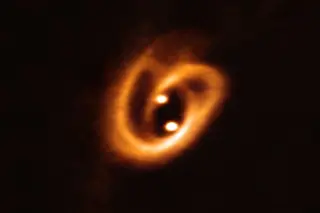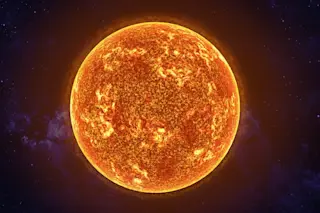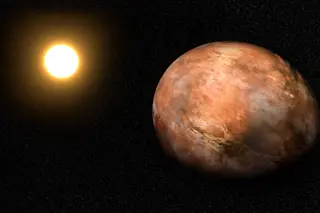Astronomers recently imaged two budding stars locked in a gravitational waltz that twisted their planet-forming disks into a pretzel-shaped knot.
The stars, recently imaged with the Atacama Large Millimeter/submillimeter Array (ALMA), are giving astronomers a unique look at a nascent binary system. The discovery sheds new light on how binary stars — and their planets — form and evolve over time.
“We see two compact sources that we interpret as circumstellar disks around the two young stars,” study author Felipe Alves of the Max Planck Institute for Extraterrestrial Physics (MPE) said in a press release. Because the majority of stars are thought to be locked in such binary systems, learning about their early lives — especially how they form and maintain Tatooine-type planets — is of great interest to astronomers.
“The size of each of these disks is similar to the asteroid belt in our solar system,” said Alves, “and ...














